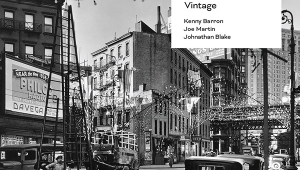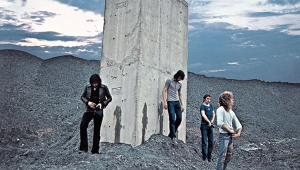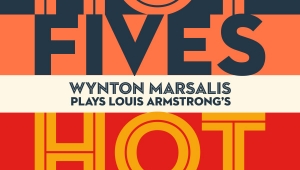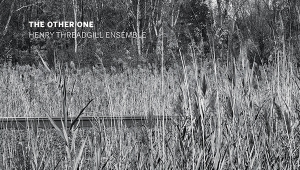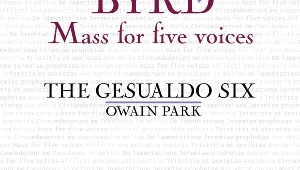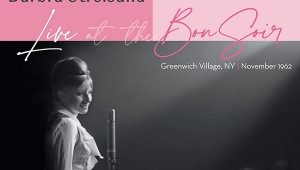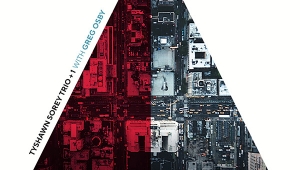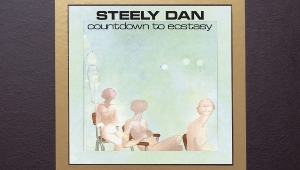| Columns Retired Columns & Blogs |
Recording of February 2010: Orchestrion
Pat Metheny Orchestrion
Pat Metheny, guitars, orchestrion programming.
Nonesuch 516668-2/-1 (CD/LP). 2010. Pat Metheny, prod.; eng. AAD? TT: 52:06
Performance ****
Sonics ****
Pat Metheny, guitars, orchestrion programming.
Nonesuch 516668-2/-1 (CD/LP). 2010. Pat Metheny, prod.; eng. AAD? TT: 52:06
Performance ****
Sonics ****
As silly as it sounds now, there was a time not so long ago when musicians were certain that the drum machine was the big bad wolf. Musicians everywhere wrung their hands at how it was the beginning of the end of live music; how hordes of unemployed drummers would soon be wandering the streets; how it was only a matter of time until acoustic instruments in general were on the way out, to be replaced by computer-generated sounds and cold, heartless, codehead technogeeks who knew more about MIDI, IBM, and CPUs than they did about W.A. Mozart, John Coltrane, or Chuck Berry.
 Like all feeding frenzies, particularly those inspired by artists, whose value to society is too often questioned, these fears turned out to be groundless when the limits of computer-driven instruments were exposed. That eternal rule of computerdom—that machines are only as good as those who program and run them—revealed that machines could aid and accent, but could not replace musicians or create music of their own. The scare did, however, inspire quite a few instrumentalists, drummers in particular, to fear for their performing lives. Thereafter ensued, however briefly, a welcome burst of dedicated rehearsing, regular bathing, and showing up at gigs on time.
Like all feeding frenzies, particularly those inspired by artists, whose value to society is too often questioned, these fears turned out to be groundless when the limits of computer-driven instruments were exposed. That eternal rule of computerdom—that machines are only as good as those who program and run them—revealed that machines could aid and accent, but could not replace musicians or create music of their own. The scare did, however, inspire quite a few instrumentalists, drummers in particular, to fear for their performing lives. Thereafter ensued, however briefly, a welcome burst of dedicated rehearsing, regular bathing, and showing up at gigs on time.
In a bio written for this project, Pat Metheny—whose last record was a trio project, Day Trip (2008), with Christian McBride and Antonio Sanchez—speaks of his grandparents' player piano as having ignited his fascination with machine-made music. He then moved on to study orchestrions: groups of instruments—mini-orchestras, if you like—mechanically triggered and played, most of them piggybacked onto the workings of a player piano. This album, titled after those antique contraptions, was inspired when the guitarist asked himself, "What might happen if the potentials of these instruments were looked at now—particularly informed by the harmonic and melodic advances in jazz of the past 70 or 80 years? Could I make some kind of personal statement using instruments like these?"
The answer, of course—we're talking about one of the most talented jazz player-composers to ever use a 12-string electric guitar—is absolutely. Metheny has worked with inventors and technicians around the country to "construct a large palette of acoustic sound-producing devices that I can organize as a new kind of orchestrion." For this album, and a tour of the US this coming summer, Metheny's orchestrion will consist of "several pianos, a drum kit, marimbas, 'guitar-bots,' dozens of percussion instruments and even cabinets of carefully tuned bottles," all of which are "struck, plucked, and otherwise played via the technology of solenoid switches and pneumatics."
What's come of this experiment in soloism is a pleasant, expansive album of instrumental jazz that has an entire forest of percussion—that's right, those dreaded drum machines and their jittery brass-hat cousins back for another stab at Armageddon—shimmering away behind Metheny's characteristically deft technique, thoughtful and elongated lyricism, blazingly fast runs, and fertile head for ideas. On some cuts, it sounds familiar; like a tighter version of the Pat Metheny Band.
The orchestrations on Orchestrion are impressive if predictable. With a recording catalog that's nearing 50 albums, Metheny's preferences in composing, arranging, and performing aren't hard to name: he likes broad, flush orchestrations; another instrument often doubling his guitar lines; compositions that are more often than not upbeat, with a whiff of his closest model, Wes Montgomery, and a tendency to rise to climaxes before gently drifting down so that his guitar can quietly and inventively begin the process all over again.
After a number of listens, the five tracks of Orchestrion do have an unusually audible quality of man meshing with machines. Nowhere is that more apparent than on the final track, "Spirit in the Air," where the steady rhythms, and the insistent rise and fall of a host of percussion instruments—chimes, a wide variety of cymbals, drums, the aforementioned bottles—while sounding like an orchestra, do have a precision and integration that may be a little too exact to have been made by man. Sonically, Metheny's modern calliope has a lively snap and a wide soundstage, the percussion instruments getting an inordinate amount of attention in the mix.
If there's a flaw here, it's that a certain sameness of tempo pervades the album. A horn—any horn—might have broken things up and added a much-needed flavor. The mood of each tune, always a crucial factor when talking about Metheny's expressive and instantly recognizable tone, varies from musing and reflective (the slower-paced "Entry Point") to lustrous and blossoming (the first and last tracks). In between, in "Expansion," a "guitar-bot" that sounds like a slide cello makes an appearance; and a beautiful, delicate piano part, triggered by a computer program written by Metheny, opens "Soul Search," which has several melodic turns reminiscent of the old Blackburn-Suessdorf chestnut "Moonlight in Vermont."
This is a solo avenue worth exploring. Metheny's man-meets-and-makes-use-of-machine experiment is not going to doom acoustic music or make drummers obsolete any time soon, but Orchestrion does show what useful tools computers and music-making machinery have become.—Robert Baird
- Log in or register to post comments



